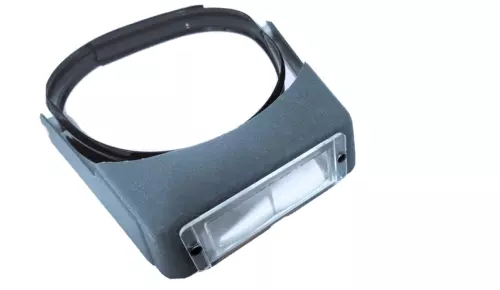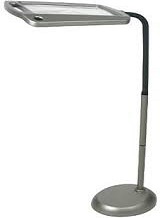Low Vision Magnifying Reading Glasses – Enhance Your Vision and Reading Experience
See Clearly, Read Comfortably-Living with low vision can make everyday tasks like reading books, newspapers, or labels challenging. Low vision magnifying reading glasses and low vision reading magnifiers are designed to bridge this gap, offering enhanced clarity and focus to help you regain independence and enjoy reading again. At Telesight Magnifiers, we provide high-quality magnifying glasses tailored to meet the needs of individuals with low vision, ensuring comfort, functionality, and improved quality of life.
NEW
Dual-Mag Magnifier-3 Powers
Clip On or Frame
$19.95
Use with your RX glasses.
Use with our Plano supplied ophthalmic quality frame
Hand Held Low Vision Magnifying Reading Glasses.
- These hand held LED low vision magnifiers for reading with light models are aspheric magnifiers.
- Aspheric lens magnifiers allow for increased magnification and image clarity while greatly reducing edge to edge distortion.
Telesight Low Vision Magnifying Reading Glasses.
- Telesight low vision magnifiers for reading small print are easy to wear and easy to carry.
- Distortion free prismatic lenses are MADE IN USA that are coated for abrasion and scratch resistance as well as better light transmissio
Clip On Low Vision Magnifying Reading Glasses.
- Turn your glasses into strong low vision. magnifying reading glasses
- The clip’s flexibility also allows for the user to easily switch from the magnifier to regular glasses with one quick flip.
- These high quality magnifiers for low vision are lightweight and put no excess weight on the user.
Headband Magnifying Glasses for Low Vision.
- These well made head wearing magnifiers have distortion free clear lenses
- Optical quality prismatic lenses provide distortion free binocular viewing for those with reduced vision for long periods of time and can be worn with prescriptions lenses
LED Magnifier Lamps For Low Vision
- The advantage of low vision magnifiers on stand is that they are hands free, stronger then regular glasses, will eliminate eyestrain.
- A low vision magnifier aid with stand is available with two types of lenses.
- A convex lens magnifier will magnify a smaller area but can have higher powers.
More information on high power magnifiers
Page Magnifiers For Low Vision
Magnifier sheet 2.5X Page Magnifier 3X Floor Magnifier
$37.95 $69.95 $112.95
4x Page Magnifier/Clamp-On 5X Page Magnifier w/light 4x Magnifier w/Base
$19.95 $22.95 $22.95
Whole Page Magnifier 2X
$37.95
Hand Held Page Magnifier for Reading
- Full page low vision magnifiers for reading will provide whole page large area viewing for reading.
- This avoids moving your small area magnifier across the page as you reading.
Low Vision Magnifier
Digital Magnifier
- High power lighted magnifier for poor vision for reading books/newspapers.
- Magnification of 2X to 32X
- 3.5 inch screen and no distortion
- This magnifier for can be used as hand magnifier or a hands free stand magnifier
Low Vision Magnifying Reading Glasses - Information
Why Choose Low Vision Magnifying Reading Glasses?
Low vision magnifying reading glasses and low vision reading magnifiers are more than just a tool—they are a life-changing aid for individuals with visual impairments. Here’s how they can make a difference:
- Enhanced Clarity and Focus
These glasses magnify text and objects, making it easier to read small print, such as books, newspapers, and labels. The clear optics reduce eye strain and allow for a more comfortable reading experience . - Improved Reading Speed and Comfort
By providing a clear view and reducing the effort required to focus, magnifying glasses and magnifiers enable users to read more efficiently and for longer periods without discomfort . - Built-In Illumination for Better Visibility
Many models include integrated LED lighting, which enhances visibility in low-light conditions. This feature improves contrast and clarity, making it easier to read or work on detailed tasks
Features of Our Low Vision Magnifying Reading Glasses
At Telesight Magnifiers, we offer a range of low vision magnifying reading glasses and low vision reading magnifiers with features designed to meet your specific needs:
- Customizable Magnification Levels
Choose from a variety of magnification powers, such as low power (1.5x-3x) for general reading or medium power (4x) for smaller text and detailed images . - Ergonomic and Comfortable Design
Our glasses are designed with user comfort in mind, featuring lightweight frames and adjustable nose pads for a secure fit during extended use. - Durable and Long-Lasting
Made with high-quality materials, our magnifying glasses are built to withstand daily use while maintaining their optical clarity. - Hands-Free Options Available
For added convenience, we offer hands-free magnifying glasses that allow you to focus on your reading or tasks without holding the device.
Who Can Benefit from Low Vision Magnifying Reading Glasses?
Our magnifying reading glasses are ideal for individuals with low vision caused by conditions such as macular degeneration, glaucoma, or diabetic retinopathy.
They are also perfect for anyone who struggles with small print or detailed tasks. Whether you’re reading a cherished book, writing a grocery list, or working on hobbies like sewing or puzzles, these glasses provide the clarity and independence you need .
How to Choose the Right Magnifying Glasses
When selecting the best low vision magnifying reading glasses and low vision reading magnifiers, consider the following factors:
- Magnification Power: Choose a magnification level that suits your specific needs. Low power is ideal for general reading, while higher power is better for detailed tasks .
- Lighting Features: Opt for glasses with built-in LED lighting if you often read in dimly lit environments.
- Comfort and Fit: Ensure the glasses are lightweight and ergonomically designed for extended use.
- Portability: If you’re frequently on the go, choose a compact and portable model.
Conclusion: Rediscover the Joy of Reading
Don’t let low vision hold you back from enjoying the activities you love. With low vision magnifying reading glasses and low vision reading magnifiers from Telesight Magnifiers, you can regain your independence, reduce eye strain, and read comfortably again. Our glasses are designed to provide the perfect balance of magnification, illumination, and comfort, making them an essential tool for anyone with visual impairments.
Shop now to explore our collection of low vision magnifying reading glasses and magnifiers and find the perfect solution for your needs. Experience the difference that high-quality magnification can make in your daily life!
FLAT RATE POSTAGE $8.00 PER ENTIRE ORDER.
Order as many magnifiers as you would like.
Your postage will always be $8.00 per order.
You may mix or match.
Alaska, Hawaii and international orders excluded.
Helpful Magnifiers for Low Vision Links.
What is magnification https://en.wikipedia.org/wiki/Magnification
What is a Magnifying Glass https://en.wikipedia.org/wiki/Magnifying_glass
Types of Simple Lenses https://en.wikipedia.org/wiki/Lens#Types_of_simple_lenses
Jewelers Loupes https://en.wikipedia.org/wiki/Loupe#Jewellers_and_gemologists
Fresnel lens https://en.wikipedia.org/wiki/Fresnel_lens
https://en.wikipedia.org/wiki/Visual_impairment
Website: https://www.aao.org/eye-health
American Council of the Blind
Website: www.acb.org
American Foundation for the Blind
Website: www.afb.org
American Optometric Association
Website: https://www.aoa.org/?sso=y
BrightFocus Foundation
Website: https://www.brightfocus.org/
Council of Citizens with Low Vision International (CCLVI)
Website: https://cclvi.info/
HELPFULL MAGNIFIERS-BLOGS
Low Vision Magnifiers Terminology
Rules Of Magnification.
- The higher the power of the lens, the closer you must get to the object being viewed and the smaller the field of view.
- As the power of a lens increases the diameter of the lens decreases.
- Diopter is a term used to determine the power(magnification}of a lens. The terms are sometimes confused.
- Field Of View: The size of the area being magnified when viewing through a magnifying lens. The higher the power of the magnifier the smaller the field of view.
- Diopter: Diopter is a measurement that is used to calculate the power of a magnifying lens. The higher diopter will provide higher magnification. Diopter is expressed as “D”
- Power: Power is how large an object or print increases as you look through a lens. Magnifying power is expressed as “X”
- Focal Length: Measurement from the center of the lens to to the object and be in focus.
- Focal Range: The distance from the magnifying lens to the object being viewed.
- Fresnel Magnifier: A flat magnifier consisting of concentric circles that can be a full page reading magnifier.
- Vision impairment: is a decreased ability to see to a degree that causes problems not fixable by usual means, such as glasses or medication. Our low vision magnifiers can be of help.




























